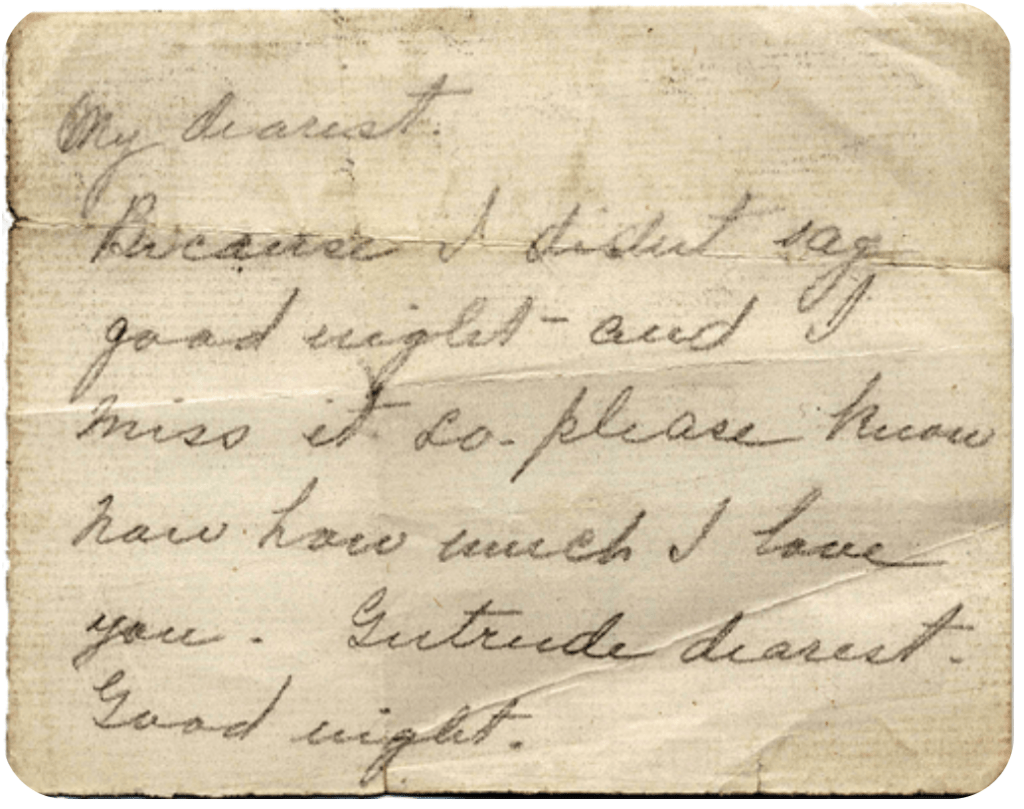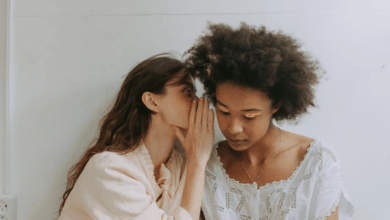
Lesbian and bisexual women have written love letters to demonstrate their devotion to each other throughout history. Because the women were often separated by distance, families, societal expectations, and heterosexual marriage – which was often viewed as a financial contract rather than a matter of love – love letters between women are a display of deeply devotional, affectionate and sexual yearning.
Avoiding cliché is one of the hardest feats when writing about love, but reading letters written by Tove Jansson, Emily Dickinson, Vita Sackville-West, Gertrude Stein, and Radclyffe Hall can teach us ways to avoid it. Considering it is almost Valentine’s Day, maybe it’s time you declared your love in writing!
1. Be Honest
Writing what you think you should write or should feel will lead to a boring descent into cliché. The letter will simply not hit. I’m sure you’ll get a “that was great, babe!” from your supportive lover, but will you move her? I’m not one for strictly adhering to artistic form – you don’t have to be a “good” writer to write a good love letter – but being honest in your love letter is absolutely essential.
Tove Jansson, the Finnish artist who created Moomins, was the queen of honest love letters to her life partner, Tuulikki “Tooti” Pietilä, and the pair stayed together for fifty years, until death parted them. Jansson wrote:
“Beloved, I miss you so dreadfully. Not in a desperate or melancholy way, because I know we shall soon be with each other again, but I feel at such a loss and just can’t get it into my head that you’re not around any more. This morning, half awake, I put a hand out to feel for you, then remembered you weren’t there, so I got up very quickly to escape the emptiness. And worked all day.”
Emily Dickinson’s “Only Woman in the World” was named Susan Gilbert. Dickinson demonstrates how honest love letters are better than consistently flowery ones:
“Will you be kind to me, Susie? I am naughty and cross, this morning, and nobody loves me here; nor would you love me, if you should see me frown, and hear how loud the door bangs whenever I go through; and yet it isn’t anger — I don’t believe it is, for when nobody sees, I brush away big tears with the corner of my apron, and then go working on — bitter tears, Susie — so hot that they burn my cheeks, and almost scorch my eyeballs, but you have wept much, and you know they are less of anger than sorrow.”
2. Be vulnerable
A part of being honest is being vulnerable. Love letters are written because of a surge in overwhelming feelings, so don’t hold back out of fear. Your letter will not be a vibe if you don’t address how your lover affects you mentally, emotionally, spiritually, physically and/or sexually.
Tove Jansson explains to Tooti how much their love has changed her life:
“I’m so unused to being happy that I haven’t really come to terms with what it involves. Suddenly my arms are heaped full of new opportunities, new harmony, new expectations. I feel like a garden that’s finally been watered, so my flowers can bloom.”
Writers Vita Sackville-West and Virginia Woolf had a passionate love connection, despite their marriages to men, which is evident in their correspondence. Vita Sackville-West depicted the vulnerability required for a good love letter when she wrote to Virginia Woolf:
“I am reduced to a thing that wants Virginia…I just miss you, in a quite simple desperate human way…So this letter is really just a squeal of pain…Damn you, spoilt creature; I shan’t make you love me any more by giving myself away like this – But oh my dear, I can’t be clever and stand-offish with you: I love you too much for that. Too truly. You have no idea how stand-offish I can be with people I don’t love. I have brought it to a fine art. But you have broken down my defenses. And I don’t really resent it.”
Emily Dickinson begs Susan Gilbert to abide by the institution of their hearts, not those which suppress it. She has no ego, she offers herself completely to Susan:
“Come with me this morning to the church within our hearts, where the bells are always ringing, and the preacher whose name is Love — shall intercede for us!”
What’s worse than being rejected, or left on read, is never writing it at all.
3. Be specific
Sure, you can love your partner’s eyes, eyes are nice, but what is it about them? How, exactly, do you feel? What feelings or memories do you want to describe to your partner?
Dickinson writes to Gilbert about the moment she fell in love with her:
“when love first began, on the step at the front door, and under the Evergreens.”
Being so specific shows your lover how much you love them. It demonstrates that your experiences together are important to you by the fact you remember them well.
Tove Jansson didn’t reinvent the wheel when she wrote to Tooti but the specificity of what she wrote makes it meaningful. She tries to capture exactly what she feels through words, which is crucial if you want your letter to be remembered:
“You see, I love you as if bewitched, yet at the same time with profound calm, and I’m not afraid of anything life has in store for us”
Remind your lover that this letter is just for her, make her feel special, by mentioning your experiences together. Make it personal.
Emily Dickinson writes to Susan Gilbert:
“We are the only poets, and everyone else is prose“
What poem do you and your lover write together?
Tove Jansson mentions specific memories as if they are lines in her poem with Tooti:
“I miss those quiet June days when you were piecing together your mosaic or whittling away at some knotty bit of wood and it was possible to listen, contemplate and explore how we felt.”
4. Be conversational
A love letter is addressed to a person so, forget about writing the most “perfect” one, write it real. Who cares about spelling errors? Add drawings, scents, color – the possibilities are endless in making it personal – but remember that this is, in the very least, the beginning of a conversation.
A love letter doesn’t have to be a grand gesture, either. Write it as if you’re speaking to your lover, not to an audience. Gertrude Stein writes to Alice B. Toklas, her life partner, about their domestic life:
“My Dearest,
Because I didn’t say goodnight – and I miss it so – please know how much I love you. Gertrude dearest. Good night.”

Don’t pretend to be someone else. Your lover fell in love with you. Tove Jansson writes to Tooti, right after a romantic spiel:
“If you write in Finnish, please could you be a dear and use the typewriter; your handwriting’s a bit tricky sometimes”
The switch between romance and bluntness is true to the nature of loving relationships. Jansson gives us a tip: use your voice, not the voice of William Shakespeare.
5. Don’t be afraid to mention sex
Sex is a part of most lesbian relationships! *insert shock and horror*
It feels as though the only way people, especially men, can comprehend lesbian sexuality is if it’s pornified. We know that’s not true. This is a personal love letter and if sex is a part of your relationship, or if you desire it to be, then don’t be afraid to include those feelings!
It’s true that sex is often not explicitly mentioned in historical lesbian love letters, many were written in a sexually repressed society, but there is a sexiness in restraint, which Emily Dickinson does well:
“And I do love to run fast — and hide away from them all; here in dear Susie’s bosom, I know is love and rest, and I never would go away, did not the big world call me, and beat me for not working… Your precious letter, Susie, it sits here now, and smiles so kindly at me, and gives me such sweet thoughts of the dear writer. When you come home, darling, I shan’t have your letters, shall I, but I shall have yourself, which is more — Oh more, and better, than I can even think! I sit here with my little whip, cracking the time away, till not an hour is left of it — then you are here! And Joy is here — joy now and forevermore!”
Friends don’t get so agitated, “cracking the time away,” because they want “love and rest” in each other’s erogenous zones. Not only does Dickinson want to put her face in Susie’s breasts, she writes in a fast tempo that communicates her impatience for it.
Sexual frustration is not hard to detect. Dickinson writes:
“I need her – I must have her, Oh give her to me!…Now, farewell, Susie… I add a kiss, shyly, lest there is somebody there! Don’t let them see, will you Susie?”
*looks into the camera like I’m on The Office*
It’s recorded that Gertrude Stein called orgasms “making a cow come out,” and she writes to Alice:
“My baby precious, you feel all treated
treated to have a complete and an entire
cow, yes sweeties you will bless you I
am so full of tenderness and delight in
my blessed wifie that it must overflow
in a cow out of she, there is no
other was to be, oh my blessed
I love you so I love you so from
top to toe, blessed baby”
Not all historical epistolary lesbians disguised their sexuality. Author of The Well of Loneliness, Radclyffe Hall, writes to Evguenia Souline in 1934:
“Darling — I wonder if you realize how much I am counting on your coming to England, how much it means to me — it means all the world, and indeed my body shall be all, all yours, as ours will be all, all mine, beloved. And we two will lie close in each others arms, close, close, always trying to lie even closer, and I will kiss your mouth and your eyes and your breasts — I will kiss your body all over — And you shall kiss me back again many times as you kissed me when we were in Paris. And nothing will matter but just we two, we two longing loves at last come together.”
Being honest, vulnerable, specific, conversational and sexual, if you want to, make for a good love letter between women. Screw the consumerist aspect of Valentine’s Day, write your lover a letter!




